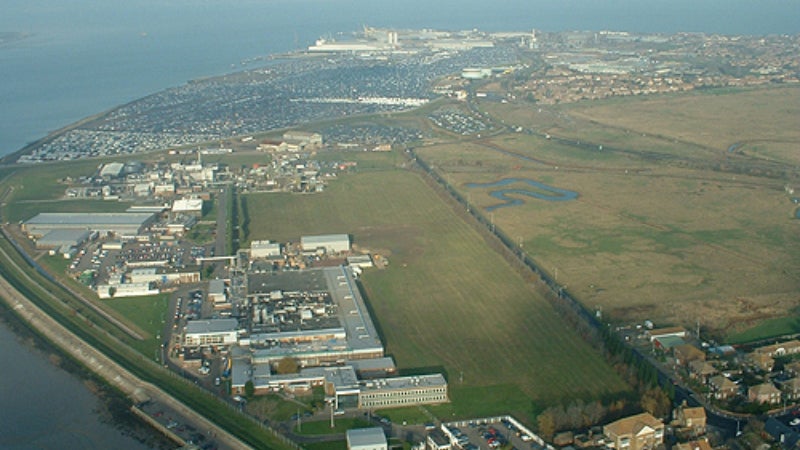
Aesica, a supplier of active pharmaceutical ingredients, opened a new High Capacity Manufacturing facility at its Queenborough site in September 2013.
The facility was constructed with an investment of £30m, as part of an expansion plan announced in July 2012.
The new facility covers an area of 10,000m2. It produces solid dose medication products for treating Type 2 diabetes in adults.
It will start production in November 2013. It implements Buck®Valve split butterfly valve technology for contained transfer of potent powders.
Located in Isle of Sheppey, Kent, England, the Queenborough facility was acquired by Aescia from Abbott Laboratories in September 2007.
The deal, which included a five-year supply agreement with Abott Laboratories, tripled the workforce of the company, boosted capacity and took Aesica into secondary manufacturing.
The Queenborough facility received the US Food and Drug Administration (FDA) approval in 2012.
High Capacity Manufacturing facility details
The new high-potency facility houses multiple suites for granulation, tabletting and blister packing. All the suites are equipped with appropriate heating, ventilating, and air conditioning (HVAC) and cleaning facilities. To avoid any occurrence of cross-contamination, the facility has a segregated unit constructed at a distance from the remaining facilities of the company.
The company says that the design and construction of the purpose-built facility is in conformance with environmental requirements. The new facility is equipped with security systems that ensure the production of Schedule II controlled drugs including opiates.
The multi-purpose Queenborough facility is designed in compliance with ISO14001 standards. It is equipped with a range of capabilities including production of solid dosage forms, anaesthetics, and controlled medicines and packaging facilities that accommodate blister packs, sachets and bottles.
The facility has increased the company’s formulation and packaging capacity of liquid and solid dosage forms. Its construction was started in August 2010 and completed in November 2011. Aesica invested €3m ($4.6m) on the construction.
The new facility allowed Aesica to expand its formulation offering in the growing market for contract manufacturing of high-potency drugs.
Technology at Aesica’s plant
The Queenborough facility is equipped with a range of technologies including high shear granulation, low shear granulation, fluid bed drying, tray drying, blending, compression, bi-layer compression, tabletting with B&D tooling, film coating, liquid manufacturing, blister packaging, solid bottle filling, liquid bottle filling, sachet filling and capsule filling. Other technologies include those for control release, alcohol-based liquids and device assembly.
Production at the high potency facility
The high potency facility allows Aesica to develop Schedule II controlled substances, potent active pharmaceutical ingredients (API) and intermediates that are classified as Category 3 by Safebridge Consultants, Liverpool UK.
The facility boosts Aesica’s the production capacity of Schedule II compounds. Aesica began production of Schedule II compounds in 2009 after the approval of its Cramlington, Northumberland facility. Compounds categorised as high potent are effective in treating a range of diseases at low doses.
The compounds, however, have to be produced in an environment equipped with appropriate safety measures.
The Queenborough facility specialises in the production of drugs containing APIs that require special handling needs including high potent medicines or controlled substances.
It also manufactures a range of formulated products including anti-infectives, cardiovasculars, anti-virals, anaesthetics, anti-inflammatories, haematinics and hormones.
The products are manufactured in solid dosage forms, liquid dosage forms, anaesthetics and potent drugs. The facility can additionally perform packaging in bottles, blister packs and sachets.
Capacity at the pharma company’s plant
The facility can operate at an annual wet granulation capacity of more than 500t, including low shear, high shear and fluid bed drying. Annual tablet production capacity including single, bilayer and film coating is more than 2bn.
The facility can additionally manufacture 1.5m litres of liquid at non-critical temperatures and up to 300,000l of liquid at critical temperatures every year. Blister packaging capacity of the facility is 90m packs per annum.
The facility can also pack 15m bottles of solids including tablets and granules and 14m bottle packs of liquids every year.
Related content
AstraZeneca API Manufacturing Plant, Bristol, UK, United Kingdom
AstraZeneca opened a manufacturing plant at their Bristol site in May 2003.
Almac Commercial Manufacturing Facility, United Kingdom
Global pharmaceutical services provider Almac Group completed the expansion of its commercial pharmaceutical manufacturing facility in Craigavon, Northern Ireland, on 20 April 2010.









